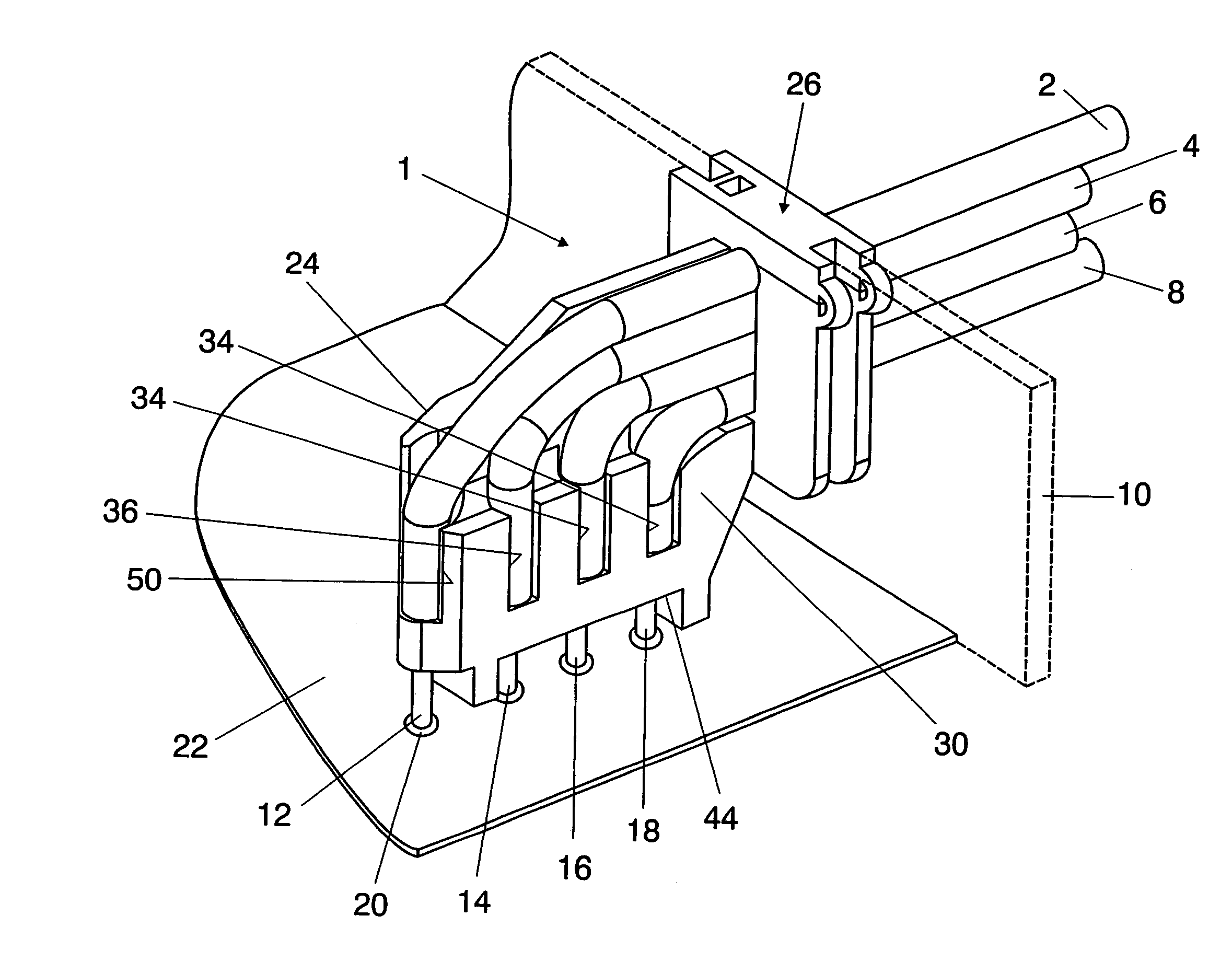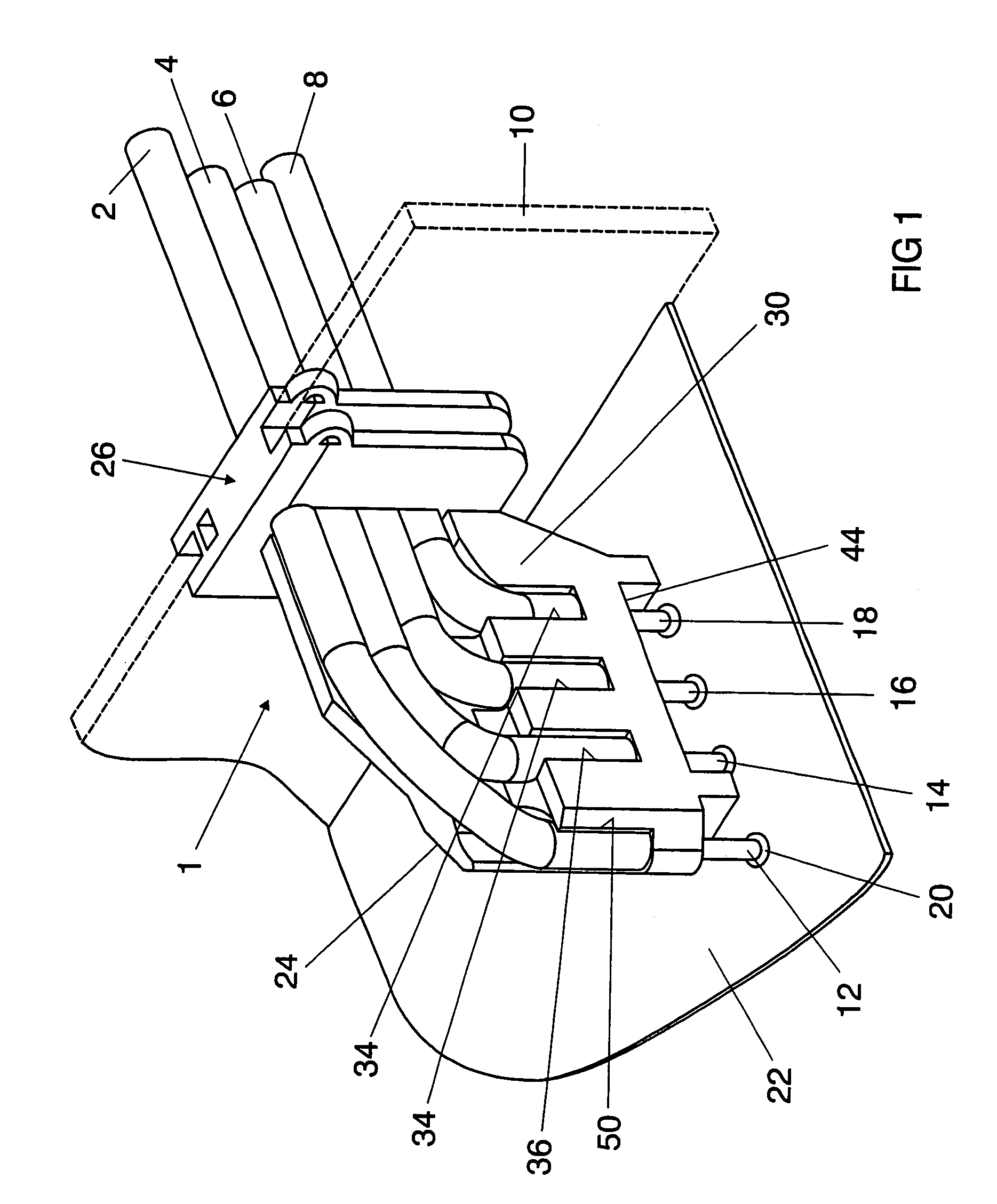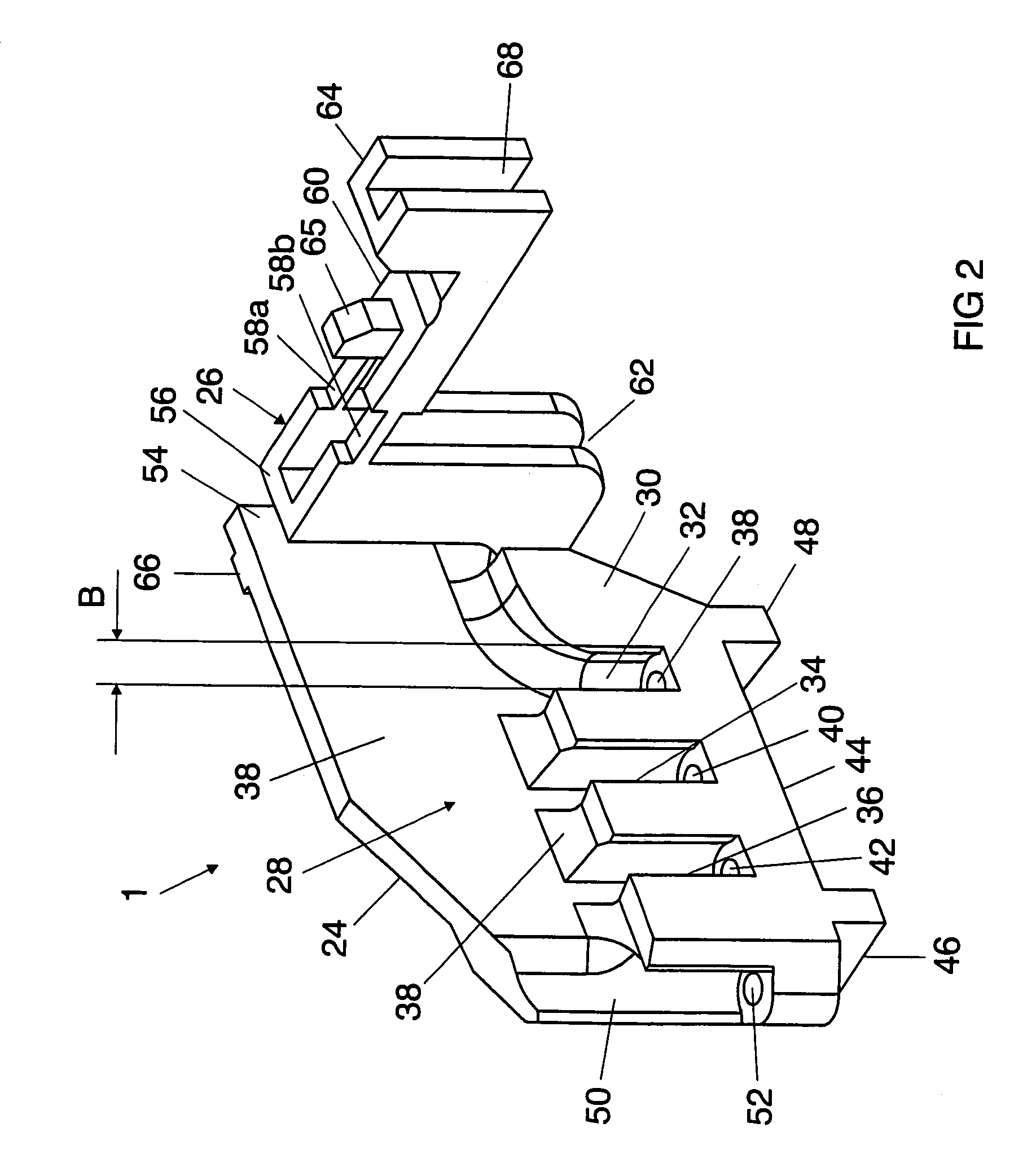Cable holder
a cable holder and cable technology, applied in the direction of electrical apparatus, connection, coupling device connection, etc., can solve the problems of difficult soldering and testing of electronic components arranged on the printed circuit board, the difficulty of lamp mounting, etc., to achieve the effect of a particularly simple production of the cable holder
- Summary
- Abstract
- Description
- Claims
- Application Information
AI Technical Summary
Benefits of technology
Problems solved by technology
Method used
Image
Examples
Embodiment Construction
[0020]FIG. 1 shows a three-dimensional illustration of a cable holder 1 for the purpose of fixing four connection cables 2, 4, 6, 8 in position, said connection cables extending through a cutout in a housing wall 10 (indicated by dashed lines) of a housing of an electronic ballast (EB). Cable ends 12, 14, 16, 18, from which the insulation has been stripped, of the connection cables 2, 4, 6, 8 protrude out of the cable holder 1 and are each connected to conductor tracks on a printed circuit board 22 by means of a soldered connection 20. The geometry of the cable holder 1 is designed such that the cable ends 12, 14, 16, 18 are positioned in a predetermined relative position in relation to one another which corresponds to the relative position of the soldered connections 20 in relation to one another, with the result that the cable ends 12, 14, 16, 18 are already aligned in relation to the predetermined soldered points once the cable holder 1 has been inserted into the housing wall 10....
PUM
 Login to View More
Login to View More Abstract
Description
Claims
Application Information
 Login to View More
Login to View More - R&D
- Intellectual Property
- Life Sciences
- Materials
- Tech Scout
- Unparalleled Data Quality
- Higher Quality Content
- 60% Fewer Hallucinations
Browse by: Latest US Patents, China's latest patents, Technical Efficacy Thesaurus, Application Domain, Technology Topic, Popular Technical Reports.
© 2025 PatSnap. All rights reserved.Legal|Privacy policy|Modern Slavery Act Transparency Statement|Sitemap|About US| Contact US: help@patsnap.com



